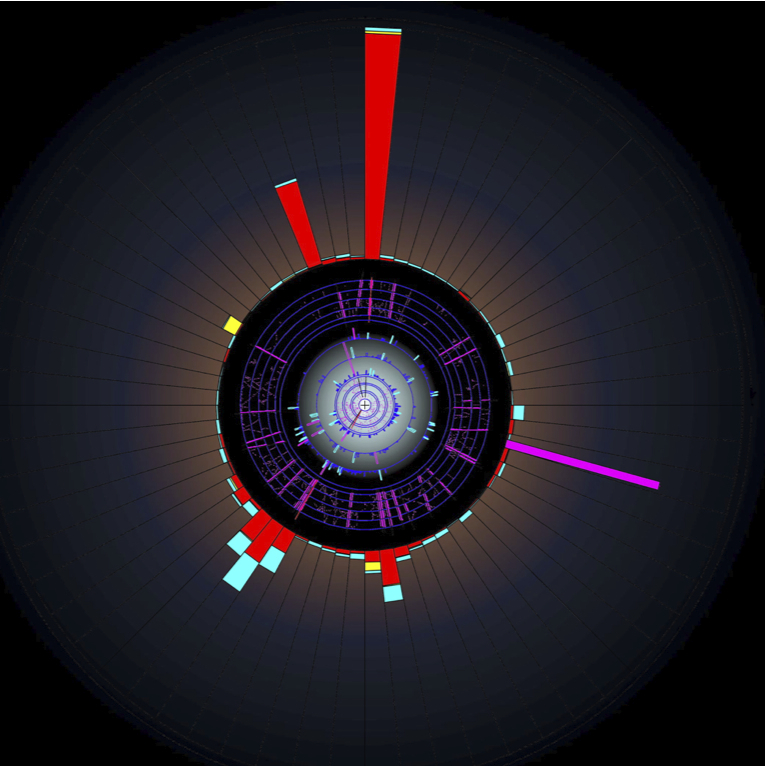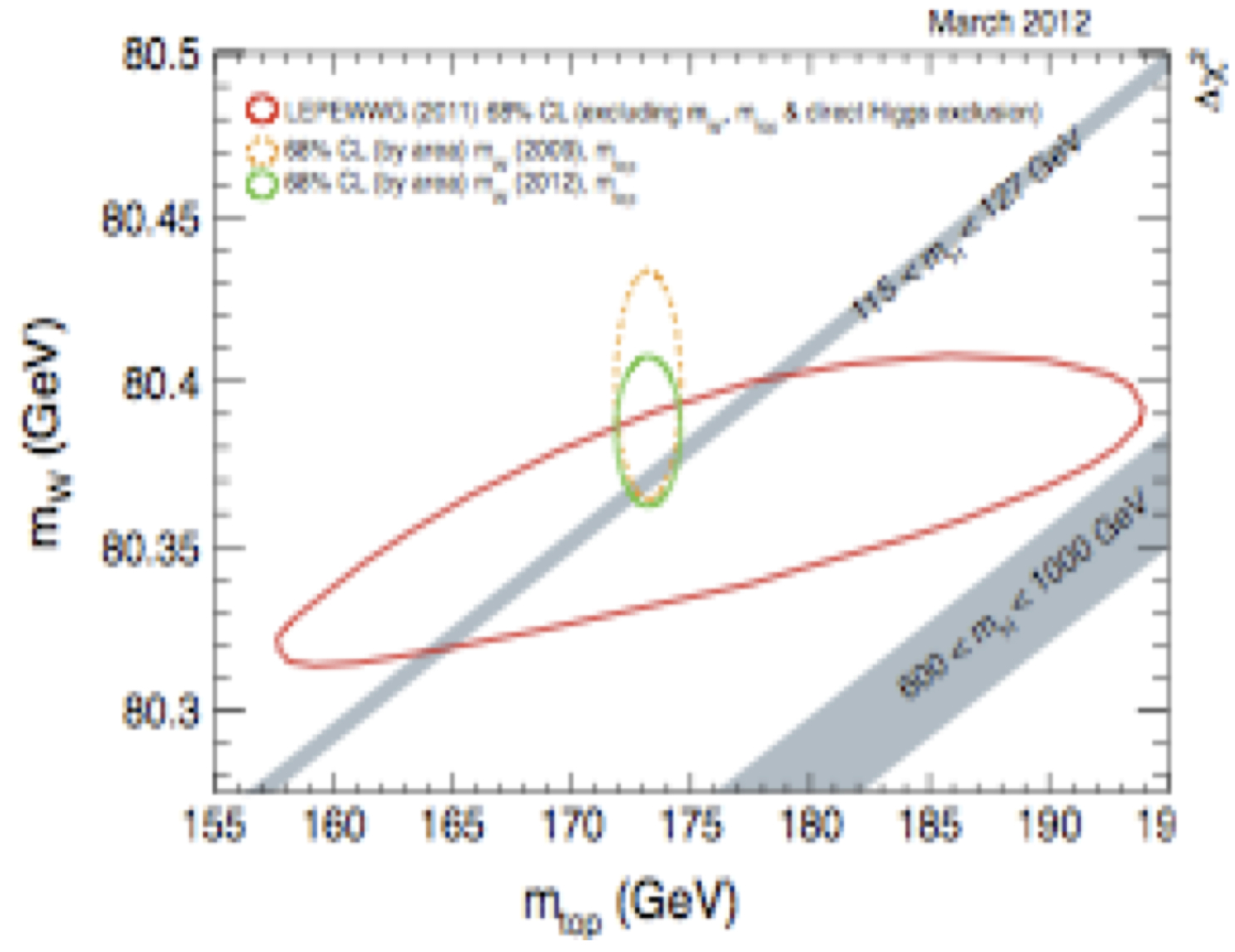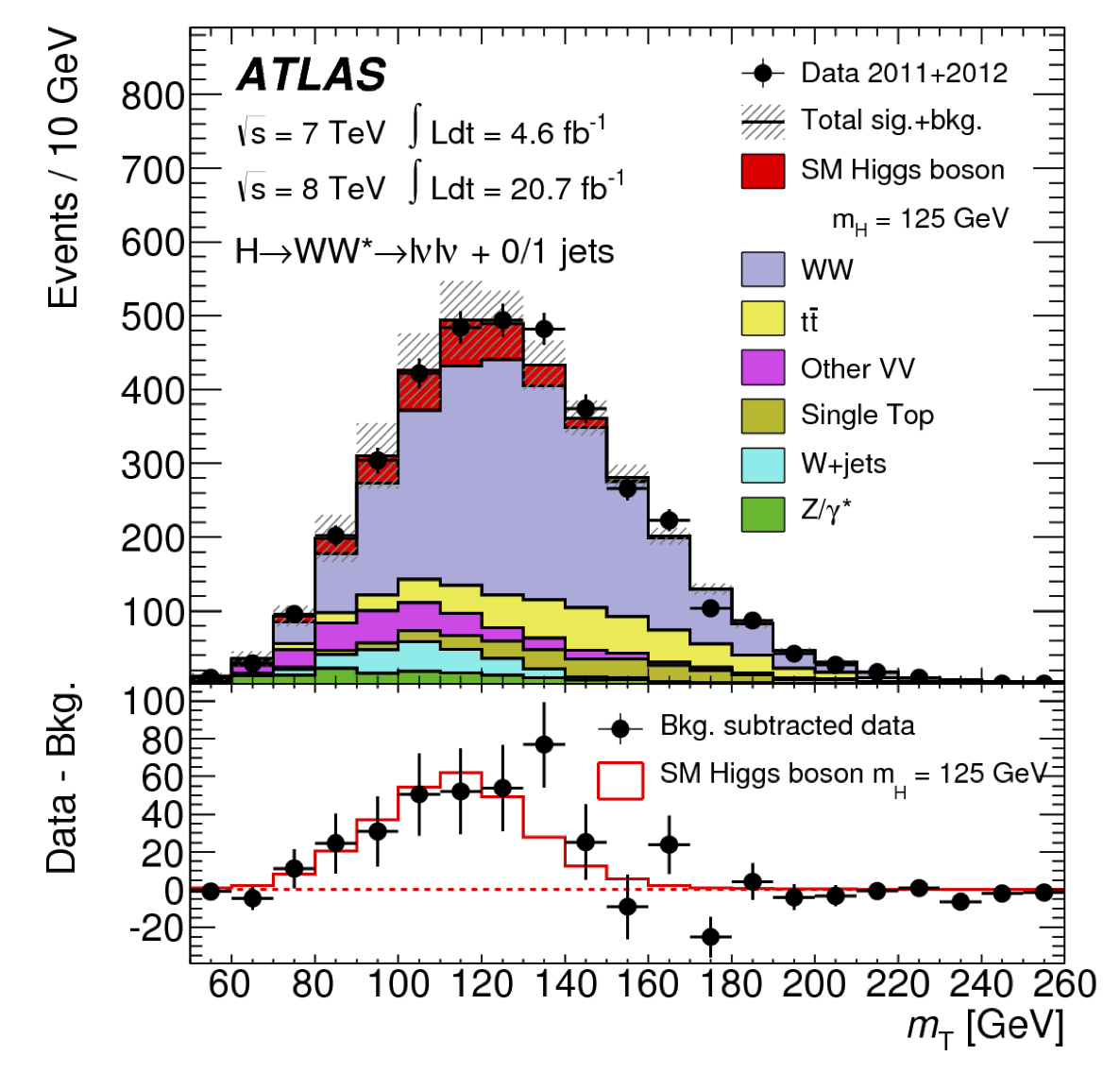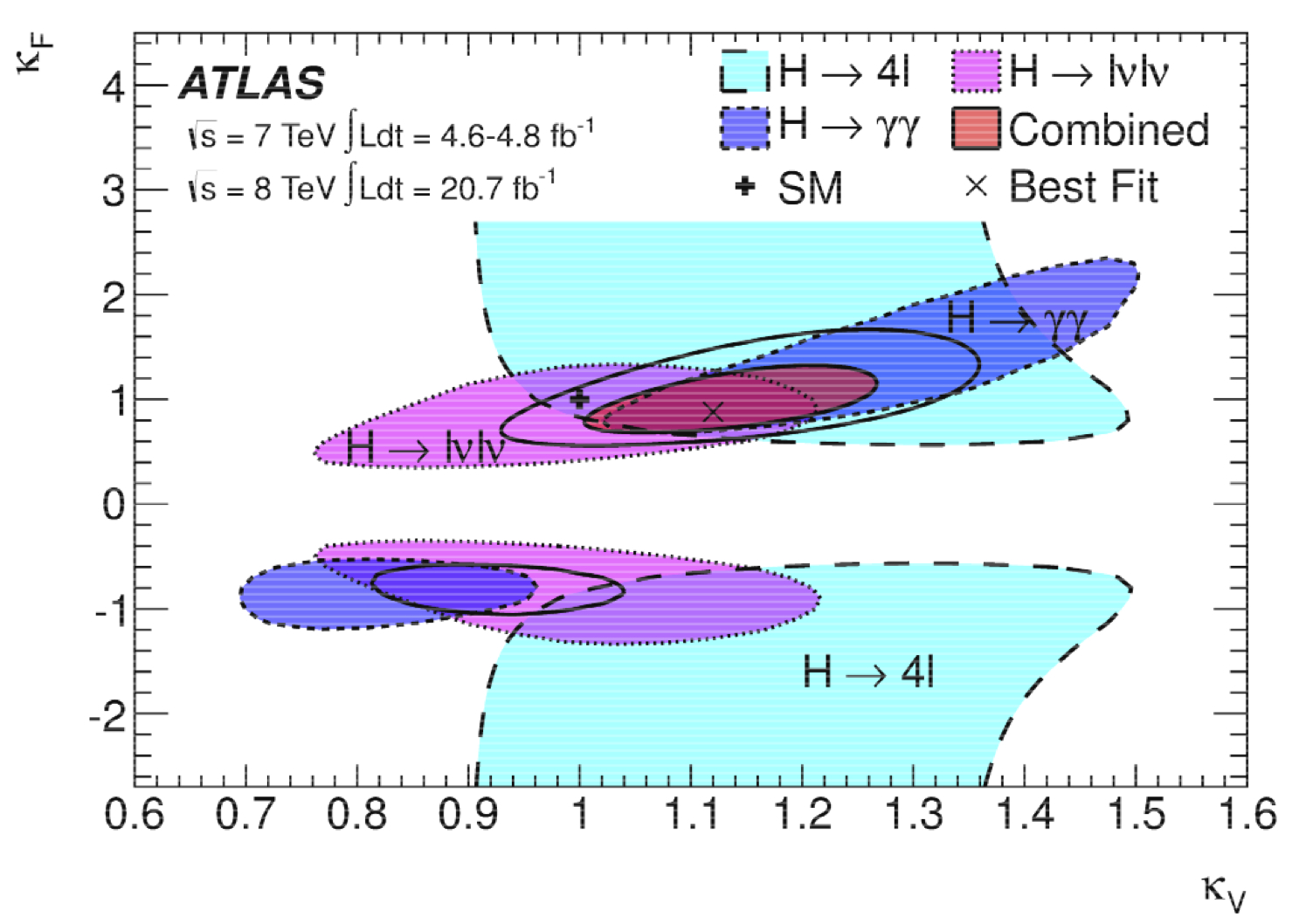
Top Quark Event

Higgs Boson Mass Constraints

Example of Higgs Boson Excess Events

Couplings of Higgs Boson
Electroweak Symmetry Breaking
Much of my experience has been in studying the process by which nature's most fundamental particles obtain mass. To do this, I have studied the most massive particles in nature: the top quark and the Higgs boson.
The process by which nature's most fundamental particles obtain mass is currently understood as resulting from the breaking of a symmetry in nature for a fundamental force called the electroweak interaction. The electroweak interaction itself is how we now understand the common phenomena we experience of light, electricity and magnetism, as well as the more rare processes that lead to several forms of radioactivity. The symmetry breaking occurs via the action of a fundamental particle called the Higgs boson.
I have studied this physics in two ways. The first is to measure precisely the mass of the top quark, the most massive fundamental particle we know. This particle has a number of fairly unusual properties that follow from its unique mass, and these include a great sensitivity to the way electroweak symmetry breaking occurs. A precise measurement of this mass provides a strong constraint of the electroweak theory. Over several years, my effort sought to make increasingly precise measurements in the somewhat rare dilepton channel of top quark production on the D0 experiment. Our final measurement in 2016 achieved a precision of 0.9%, which was the most precise value from the Fermilab Tevatron. My work was used to predict the Higgs boson mass before its discovery in 2012 and to help to constrain the electroweak fit after.
The other way I studied electroweak symmetry breaking is by directly searching for the Higgs boson, and studying its properties. The Higgs boson is also a very strange particle with unusual properties. Finding it and testing it against predictions has been a goal in particle physics for many years, and finally at the Large Hadron Collider we had an instrument powerful enough to do that. I worked on studying some of backgrounds that can be mistaken as a Higgs particle decaying to two W bosons, as well as the theoretical calculations that experimentalists need to ensure that they understand these backgrounds. It was very exciting to see an excess of events in the Higgs WW analysis I was contributing to in summer 2012, which contributed to the final discovery paper from the ATLAS Collaboration. In this case, the Higgs was right where it was predicted to be. Since then, I continued to focus on determining what the properties of the Higgs boson are, including its spin and couplings. So far all results are consistent with the particle predicted by the electroweak theory.
My particle physics research has included substantial efforts on calibration, data reduction, and, in the case of the top quark mass measurement which were world leading in their channel for several years, precision measurement.